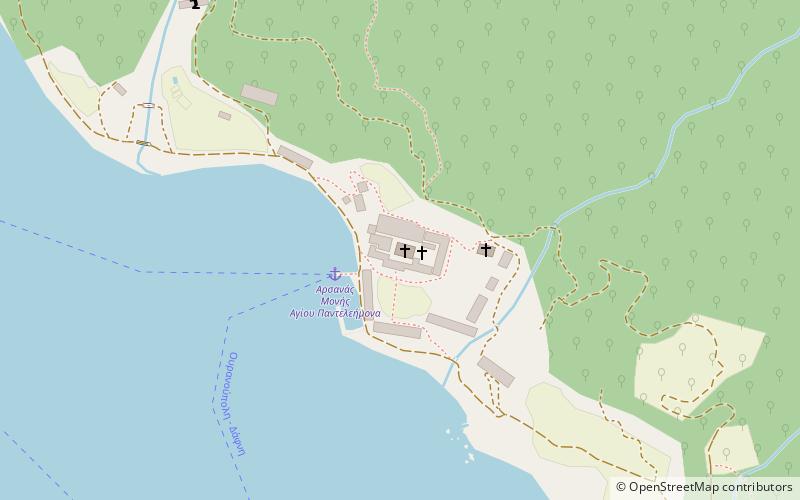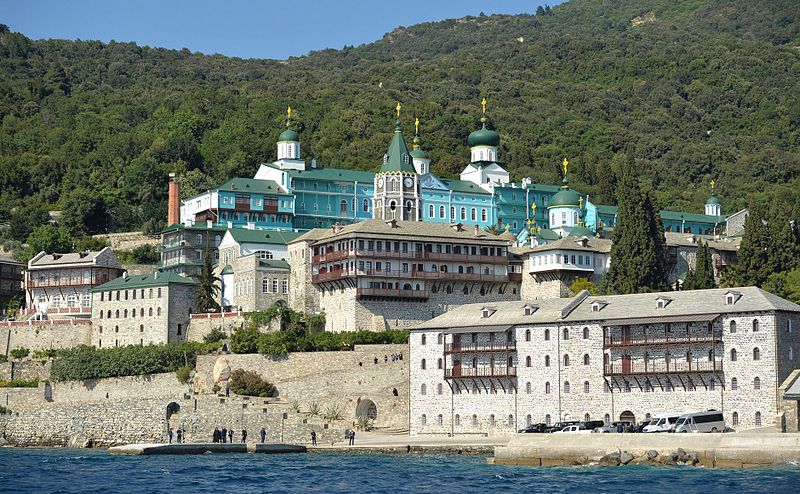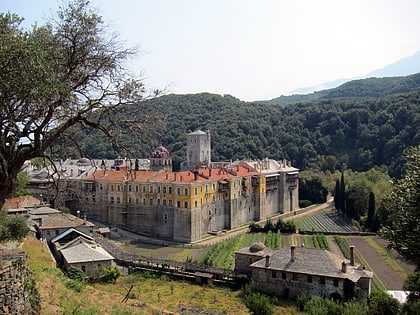St. Panteleimon Monastery


Facts and practical information
Nestled on the rugged slopes of Mount Athos in Greece, the St. Panteleimon Monastery stands as a beacon of Orthodox Christian spirituality and cultural heritage. This imposing structure, often referred to as "Rossikon," is renowned for its rich history and deep religious significance.
Founded in the 11th century, St. Panteleimon Monastery has undergone numerous renovations and expansions, evolving into a complex of impressive buildings that encapsulate Byzantine architecture. The monastery is characterized by its large, fortified walls and the prominent church at its center, dedicated to St. Panteleimon, the healer saint.
The site is a repository of religious artifacts, ancient manuscripts, and sacred icons, making it a treasure trove for historians and theologians. Its library contains a vast collection of texts, some of which date back to the early centuries of Christianity.
St. Panteleimon Monastery holds a unique place in the monastic community of Mount Athos, known for its strong connections to the Eastern Orthodox Church and its historical ties to the Russian Orthodox tradition. The monastery has traditionally been inhabited by Russian monks, and its services are conducted in Church Slavonic.
Access to the monastery, and Mount Athos in general, is restricted; it is an autonomous polity within Greece, and only men are permitted to visit, with a limited number of entrance permits issued daily. Pilgrims and visitors who are granted access can experience the tranquil monastic life, participate in liturgical services, and witness the monks' devotion to prayer and asceticism.
Athos
St. Panteleimon Monastery – popular in the area (distance from the attraction)
Nearby attractions include: Simonopetra, Monastery of Iviron, Dionysiou Monastery, Koutloumousiou Monastery.











